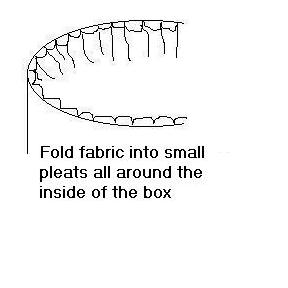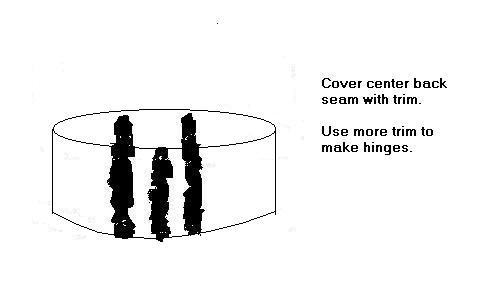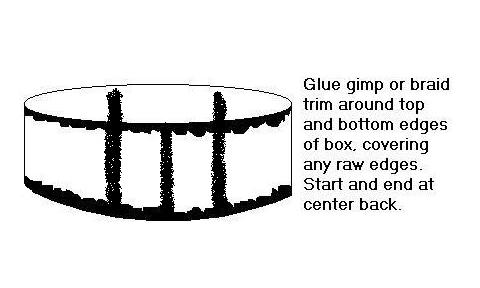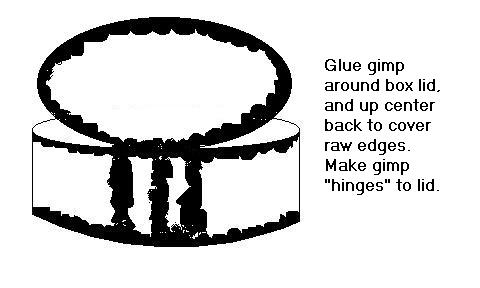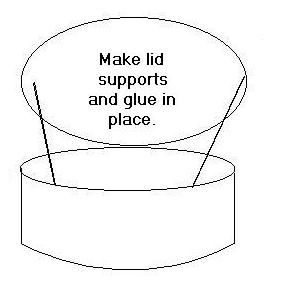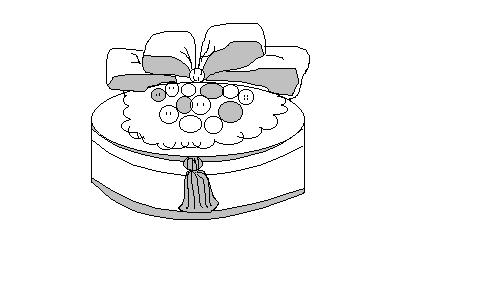|
A 5"-12" diameter BOX with lid: May be made from cardboard, paper mache, wood, plastic or metal. (may be any shape; round, oval, heart, octagon, or square) |
||
|
YARDAGE:
light to midweight upholstery fabrics, moire, heavy satins, taffetas, velvets, crushed velvets, brocades. (If lightweight: also purchase corresponding amount of iron-on interfacing to stiffen the fabric) |
||
|
Box diameter (widest point) |
------------------ | Yardage* |
| under 5" | ------------------------- | 1/4 yd. |
| 5"-8" | ------------------------- | 3/8 yd. |
| 8"-12" | ------------------------- | 1/2 yd. |
| 12" & up | ------------------------- | 3/4 yd. |
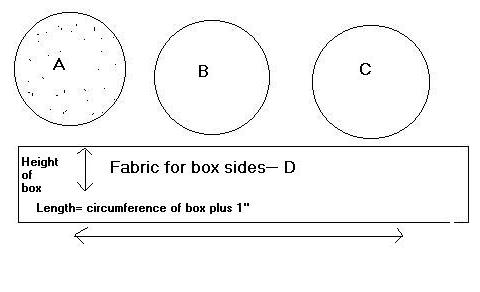
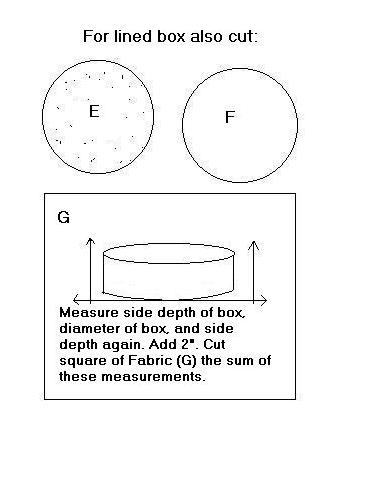
 |
 |



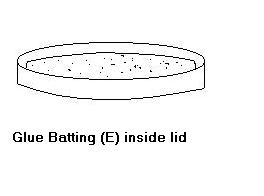
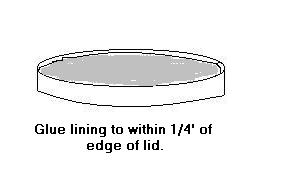

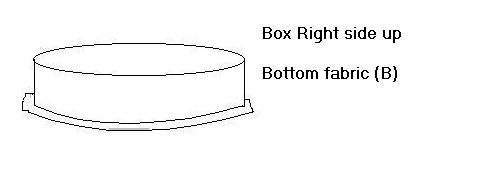
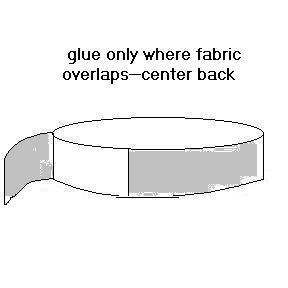
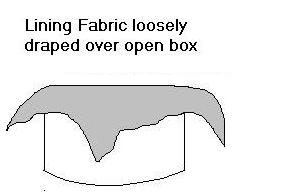 |
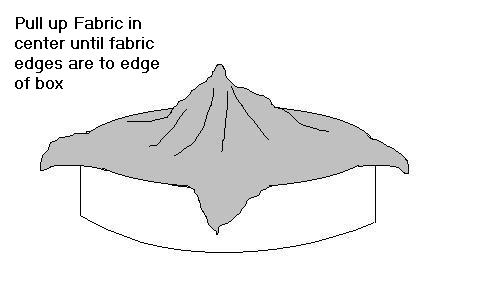
|
